Broadleaves are a great way to add diversity to a cover crop mix as the represent multiple different plant families. Most broadleaves have extensive root systems that are fantastic for soil building. Broadleaves can also be used for compaction breaking, erosion control, and attracting beneficial insects. Here are our top 10 broadleaves by sales volume.
1. Buckwheat (Fagopyrum esculentum)
Buckwheat is an extremely fast-growing warm season broadleaf. Buckwheat will start blooming 4 weeks after planting and its indeterminate nature allows it to bloom for 5-6 weeks. This indeterminate growth habit makes buckwheat an excellent choice for attracting beneficial pollinator insects. One of the biggest benefits of buckwheat is its ability to extract phosphorus and other nutrients from the soil and render them more available for the next crop, making it a great soil builder. Its vigorous growth habits make it an excellent choice for establishing a quick cover and suppressing weeds. Buckwheat is an efficient moisture crop and will use about half the water a soybean crop would use.
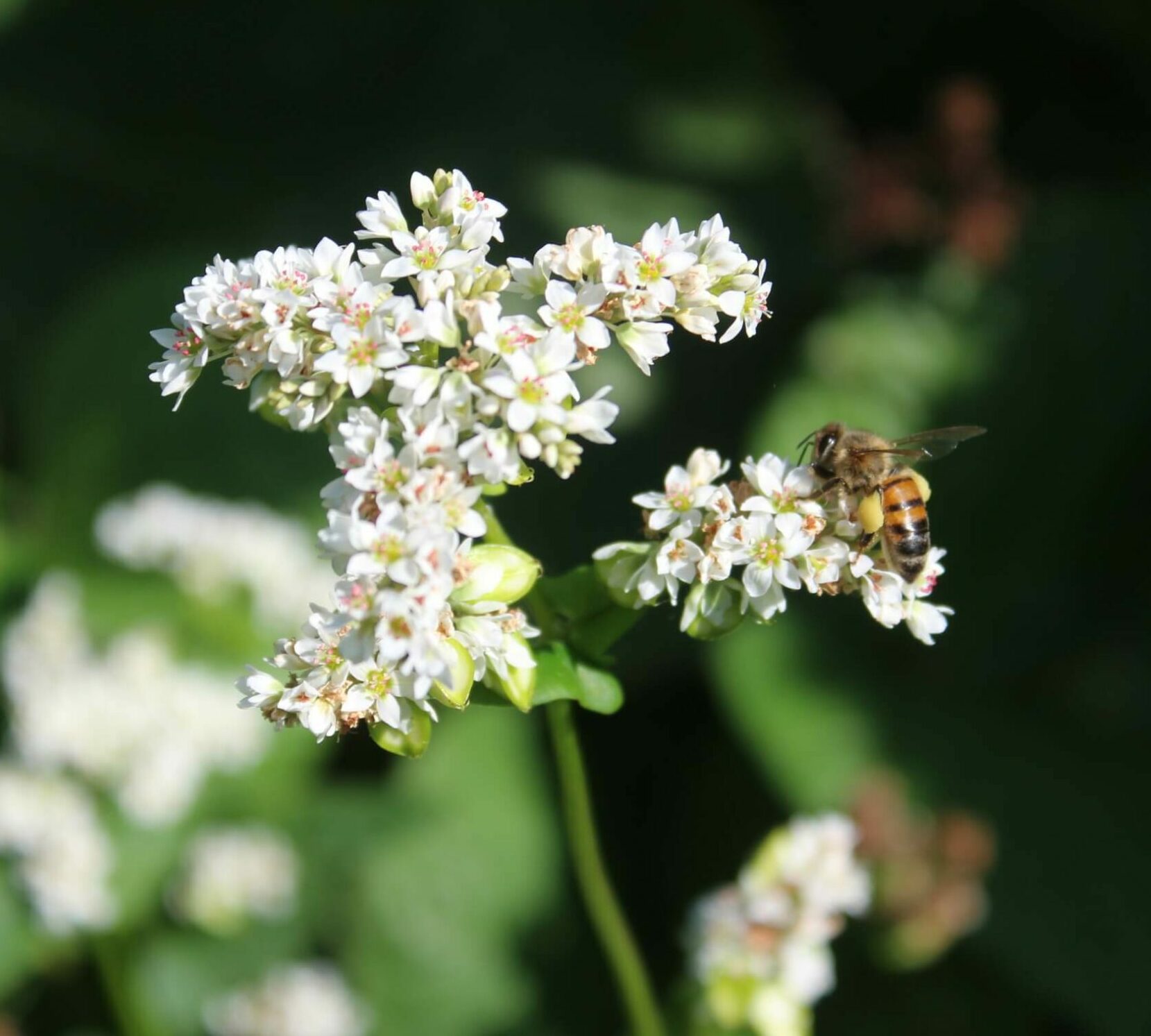
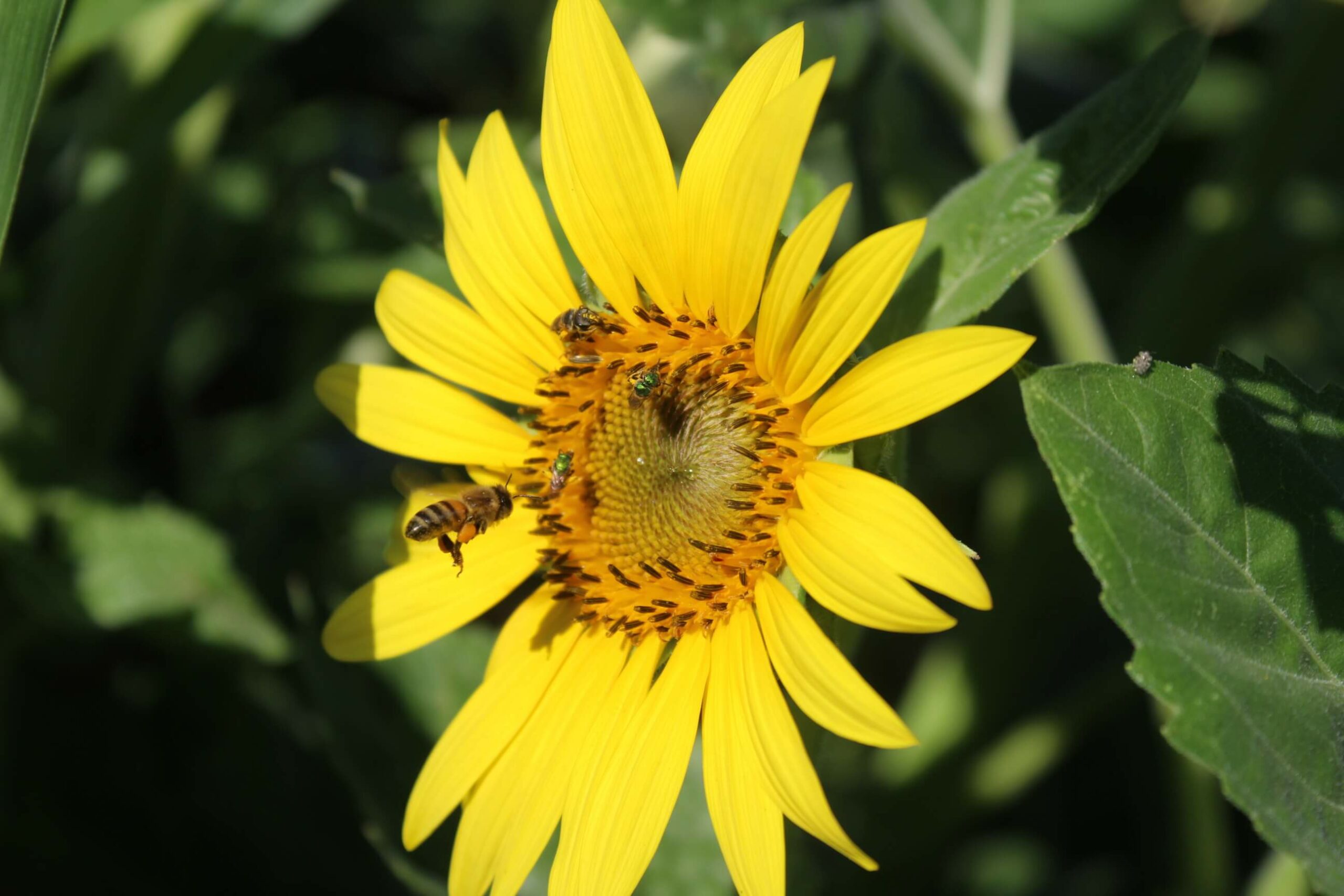
2. Sunflower (Helianthus annuus)
Black oilseed sunflowers have one of the deepest tap root systems of all cover crops. This enables sunflowers to break compaction layers and to reach and use nutrients not available to other crops. While flowering, the bright yellow sunflower heads are extremely attractive to pollinators and beneficial insects. If grazed earlier in their lifecycle, sunflowers make good forage. As an oil seed crop, sunflowers work well in stockpile mixes for winter grazing as the heads are a great protein and energy source for winter grazing livestock. Sunflowers are cold tolerant to 28 degrees and thus can take a light amount of frost if planted in the early spring or late fall.
3. Flax (Linum usitatissimum)
Flax is a cool season broadleaf plant that is often raised as a cash crop for linen fiber and linseed oil. Flax is a short growing, high carbon plant that creates very nice, long lasting soil armor but has little to no forage value. The beautiful blue flax flowers are very attractive to pollinators and beneficial insects. Flax is cold tolerant to 20 degrees so can be planted from spring until late summer. Flax is one of the best hosts for mycorrhizal fungi and should be included in any mix that targets the building of soil health and the soil microbiome.

4. Safflower (Carthamus tinctorius)
Safflower is a warm season broadleaf with a taproot that can reach depths of 8 feet, making it very drought tolerant. This extensive taproot system helps to break up soil compaction and scavenge nutrients. Safflower is often raised as an oilseed crop and normally has no forage value due to extensive and sharp spines on the plant. “Baldy” safflower is a variety that has been bred to be spineless and thus lends itself well to use as forage for livestock if grazed early in its vegetative life. Green Cover owns the exclusive marketing rights to Baldy safflower.

5. Okra (Abelmoschus esculentus)
Okra is one of the most drought tolerant broadleaves as it loves the heat and has a deep taproot to pull up subsoil moisture and help with compaction issues. Okra is great forage with both its leaves and its fruit pods being very palatable for livestock. The stem of okra is more woody and thus gets left behind by grazing animals creating lasting residue and a good snow catch. With an indeterminate flowering habit, okra is a great plant for attracting a diversity of pollinators. We use a smooth variety called Clemson Spineless 80, which is also one of the most common cultivars of okra used by home gardeners.
6. Phacelia (Phacelia tanacetifolia)
The beautiful and distinctive purple flowers that phacelia is known for are among the best nectar producing flowers and thus are highly prized by bees and other insects. This cool season broadleaf can tolerate temperatures down to the low 20’s and works best when planted in the spring on a similar schedule as oats. Phacclia has a shallow but very fibrous root system that does a great job of breaking up surface compaction. Phacelia has very good palatability even in advanced stages of maturity making it a good addition to grazing mixes.
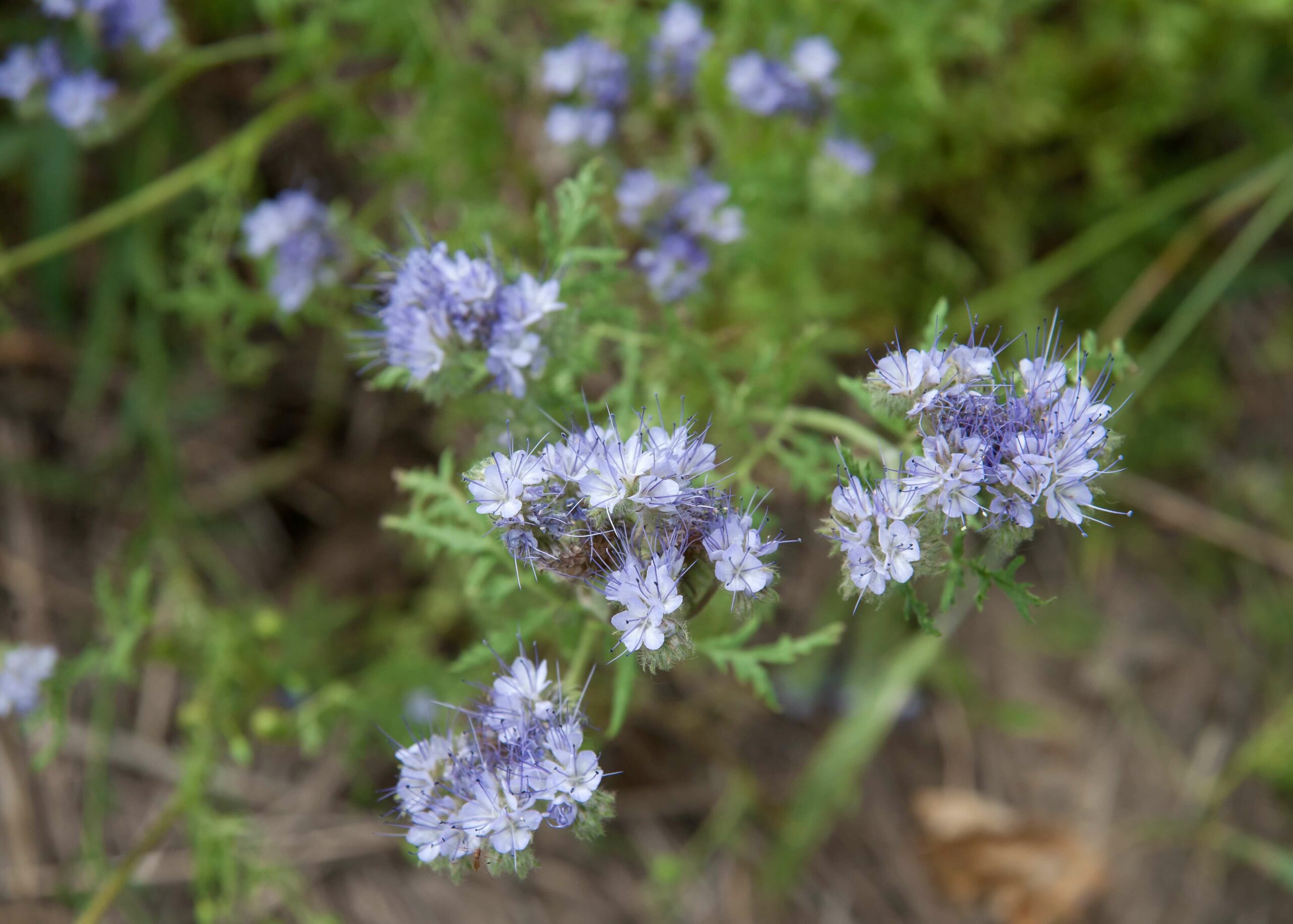
7. Sugar Beets (Beta vulgaris)
Sugar beets are a very palatable cool season broadleaf that can provide great forage for livestock or wildlife such as deer. Sugar beets have a high tolerance for salinity and high pH in soils making them a good choice for tough conditions. Sugar beets are slower growing than most brassicas and other broadleaves and cannot tolerate as much shade and thus can perform poorly in mixes that contain a lot of taller warm season plants.
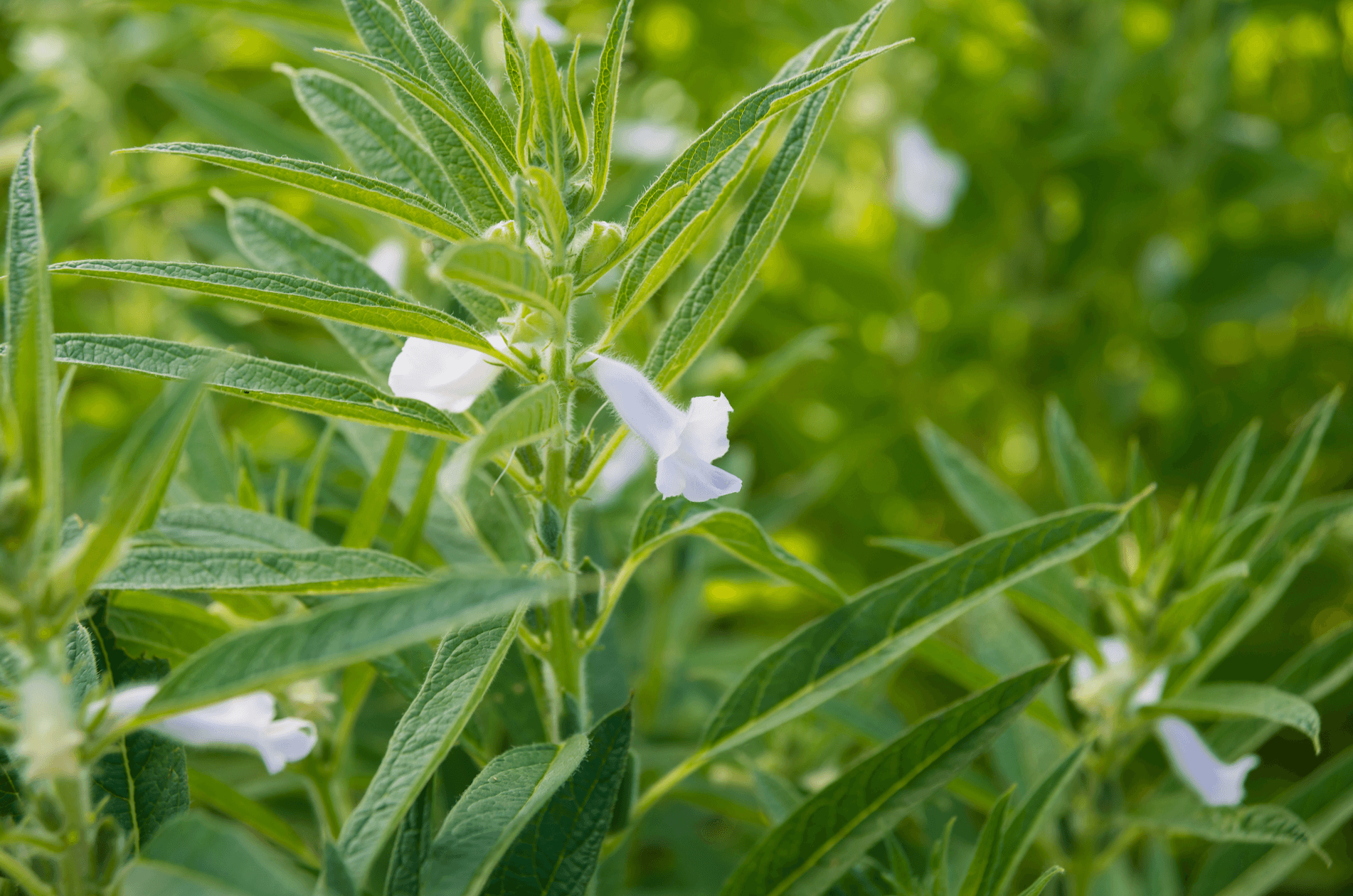
8. Sesame (Sesamum indicum)
Sesame is a warm season broadleaf that is normally grown for the oil content of the seed. It is one of the oldest cultivated plants and has been grown by people for over 4,000 years. Sesame loves hot weather and can grow with very limited water as well as being fairly tolerant of low pH soils. Sesame can grow 5-6 tall and will put on bell-shaped, white and purple flowers late in the season which makes it a great addition to a full season pollinator mix. Sesame has little to no forage value as livestock will not graze it, but it can still be a good addition to a grazing mix so there is some taller standing structure after the cattle have grazed the paddock.
9. Cucurbits (Cucurbitaceae family)
Cucurbits such as squash, pumpkins, melons and gourds are a great addition to many warm season cover crop mixes. Due to their vining nature, they can creep along the ground as well as climb the stalks of other plants to fill in gaps in the canopy. This ensures optimal sunlight capture and reduces space for weeds to grow. The fruits from cucurbits are very edible to livestock and work well to be grazed during the growing season or saved until after frost as part of a stockpile grazing mix. Pumpkins and melons are more likely to stay on the ground while squash and gourds are more likely to climb up taller plants such as corn or sunflowers if they are given a chance. The Green Cover Cucurbit blend has good representation of pumpkins, melons, squash, cucumbers, and gourds.


10. Chia (Salvia hispanica)
Chia is a warm season broadleaf in the mint family that loves full sun and grows well through the heat. Once established, chia does a good job of suppressing weeds and will get 5-6 feet tall. Chia is a later flowering plant and blue-purple flowers on its seed head are very attractive to pollinators and beneficial insects that are looking for late summer nutrition. Chia is relatively expensive and is mostly used in pollinator mixes.
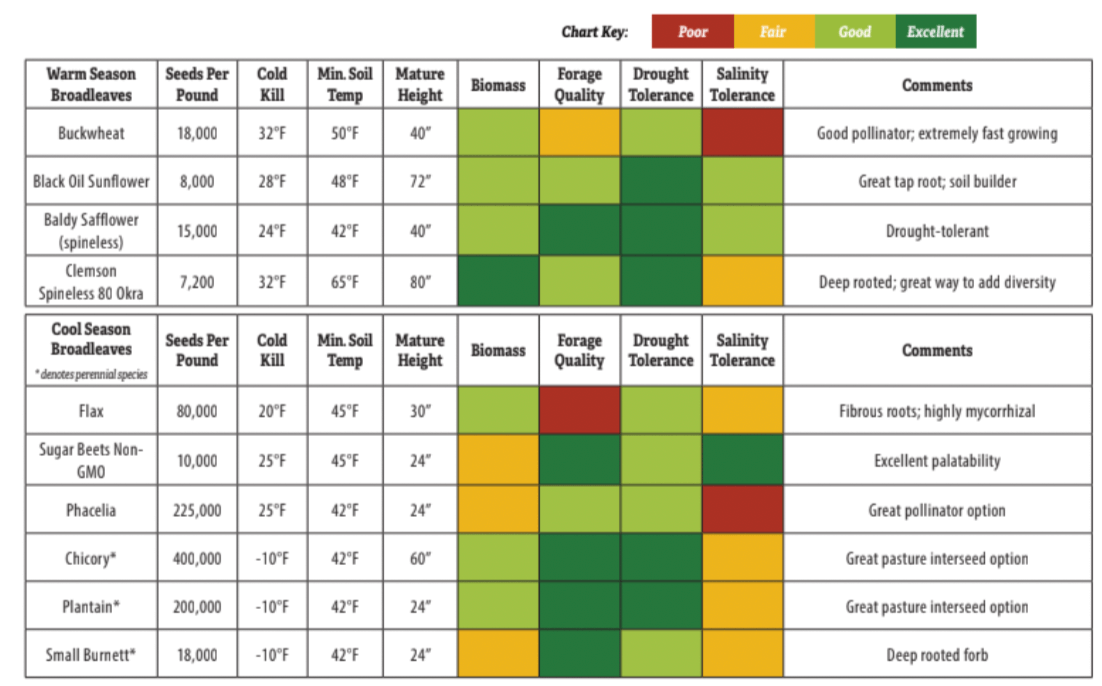
Dive into over 90 pages packed with scientific articles and fascinating stories from soil health experts, researchers, farmers, innovators, and more! All as our complimentary gift to you, a fellow soil health enthusiast!This article first appeared in the 10th Edition of Green Cover's Soil Health Resource Guide.